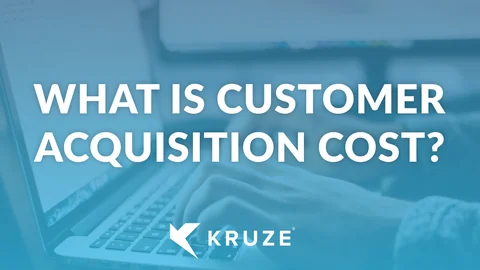
Customer acquisition cost (CAC) is a fundamental metric to know in startup accounting. Customer acquisition cost is the amount you pay to add a single customer to your business.
You calculate CAC by taking all of your sales and marketing expenses and dividing that cost by the total number of customers you have added.
How often you calculate your CAC can vary. Sometimes people want to check it on a quarterly basis, others may want it monthly, and some on an annual basis. Whatever the frequency of the calculation, simply take the customers added during that time period, divide it into the sales and marketing expenses, and that is your customer acquisition cost.
Why is CAC important?
CAC is probably one of the most important units of economic measurement at startup. Every single VC will ask you what your customer acquisition cost is, and there is a good reason for that.
First, there is some shorthand that VCs really like to see using CAC. One metric that VCs use is to divide the lifetime value (LTV) of a customer by the customer acquisition cost. Ideally this number is somewhere between 3X and 5X. This means that for every dollar you spend on customer acquisition cost you get $3-$5 back – and that is what we mean by CAC being a unit of economic measurement.
The other key reasons why venture capitals care about this metric so much are:
- CAC validates the business. Your customer acquisition cost shows that you are providing a valuable service.
- CAC demonstrates how customers can pay for the costs of acquiring customers. If your CAC is less than or equal to the amount of revenue generated by a customer, then the customer is covering your sales and marketing expenses. That’s good!
VCs are giving you capital to invest, and this is one of the things they want to see you invest in, so they will definitely ask about it.
CAC brings economies of scale
As your startup grows, you will often get economies of scale with your ability to acquire new customers. That means you can start adding new customers for a lower cost. Positive word of mouth and recommendations start to kick in, and you begin to get better at pretty much everything in your business.
This happens in most companies. For a while customer cost goes down, and you become more profitable on a unit economic basis. That’s very exciting.
CAC rises with saturation
Unfortunately, however, startups can hit what’s called ‘saturation’ in their target market. You’ve captured all of the easily acquired customers. This can mean that, all of a sudden, it is a lot harder to reach that next customer and you have to spend more money to acquire them.
Then the customer acquisition cost will climb. As we know from working with a great number of startups, it is always a tough moment. In a short space of time, the startup may have to invest a lot more money, which can lead to the breaking down of the unit economics of the company. This is when a company can potentially get into trouble or find themselves having a much harder time raising additional capital.
CAC measures the effectiveness of your sales and marketing
By using CAC, you can measure how effective your sales and marketing strategies are, and you can adjust those strategies as necessary. You may want to improve your marketing and sales process by increasing automation, or implement a customer relationship management (CRM) platform. You might increase your value to customers by adding new features or enhancements that will help to draw in new customers. No matter what acquisition strategy you pursue, you’ll want to reevaluate it regularly based on cost and effectiveness, and CAC will help you do that.
If you have any questions on CAC, startup accounting, taxes, or venture capital please contact us. You can also follow our youtube channel and our blog for information about accounting, finance, HR and tax for startups!








